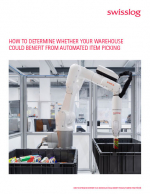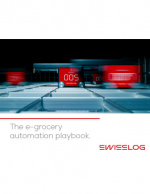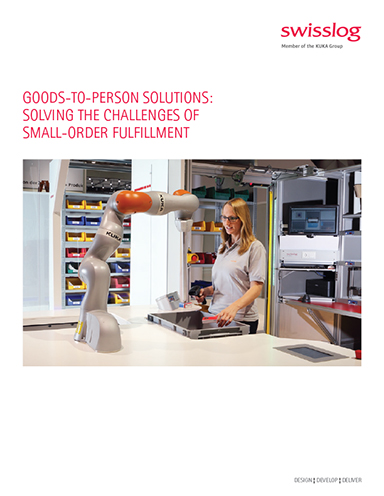Goods-to-Person Solutions: Solving the Challenges of Small-order Fulfillment
The newest white paper from Swisslog, provides an in-depth review of five automated goods-to-person solutions to help you make the right choice.
Many distribution facilities, and particularly those handling e-commerce, are embracing a goods-to-person approach as a solution to achieve improved efficiency in their small-order fulfillment processes.
Representing a 180-degree turn around from a fulfillment model where the worker goes to the goods to make the pick, in a goods-to-person model the picker is stationary, utilizing technology to facilitate the inventory storage and movement.
Capable of handling thousands or tens of thousands of different SKUs, these systems allow inventory to be stored, picked, packed and shipped with a very high level of efficiency, optimized labor usage and minimized operational costs.
Some of the latest automated goods-to-person solutions, such as those offered by Swisslog Warehouse and Distribution Solutions, are highly flexible and scalable, and offer attractive returns on investment.
As traditional retailers increasingly embrace e-commerce and omni-channel fulfillment, the need grows to support an ever increasing number of SKUs that typically include both fast-and slow-moving items.
From the moment the online order is placed to when it is picked, packed and shipped, every step in the process must be handled efficiently, consistently and cost effectively. Speed of order fulfillment, order accuracy, minimized returns and customer satisfaction are critical priorities.
The typical e-commerce consumer expects: cross-channel services such as ‘click-and-collect’ and ‘order-to-deliver’; wider online SKU offerings; online store fronts; order accuracy; fast and free delivery; free returns; and a mobile retail site. When these consumer needs are compared to distribution in an e-commerce environment, they present significant challenges for e-fulfillment.
These challenges include:
- Large SKU counts with a long, slow moving tail;
- High and unpredictable growth;
- High penalty for poor performance resulting in potential brand damage;
- Uncertain business terrain that demands flexible and adaptive solutions;
- Demand for real-time and accurate inventory visibility;
- Small number of order lines per order;
- High returns from end customer;
- Extreme peak season volumes.
What’s Related




Favorites





